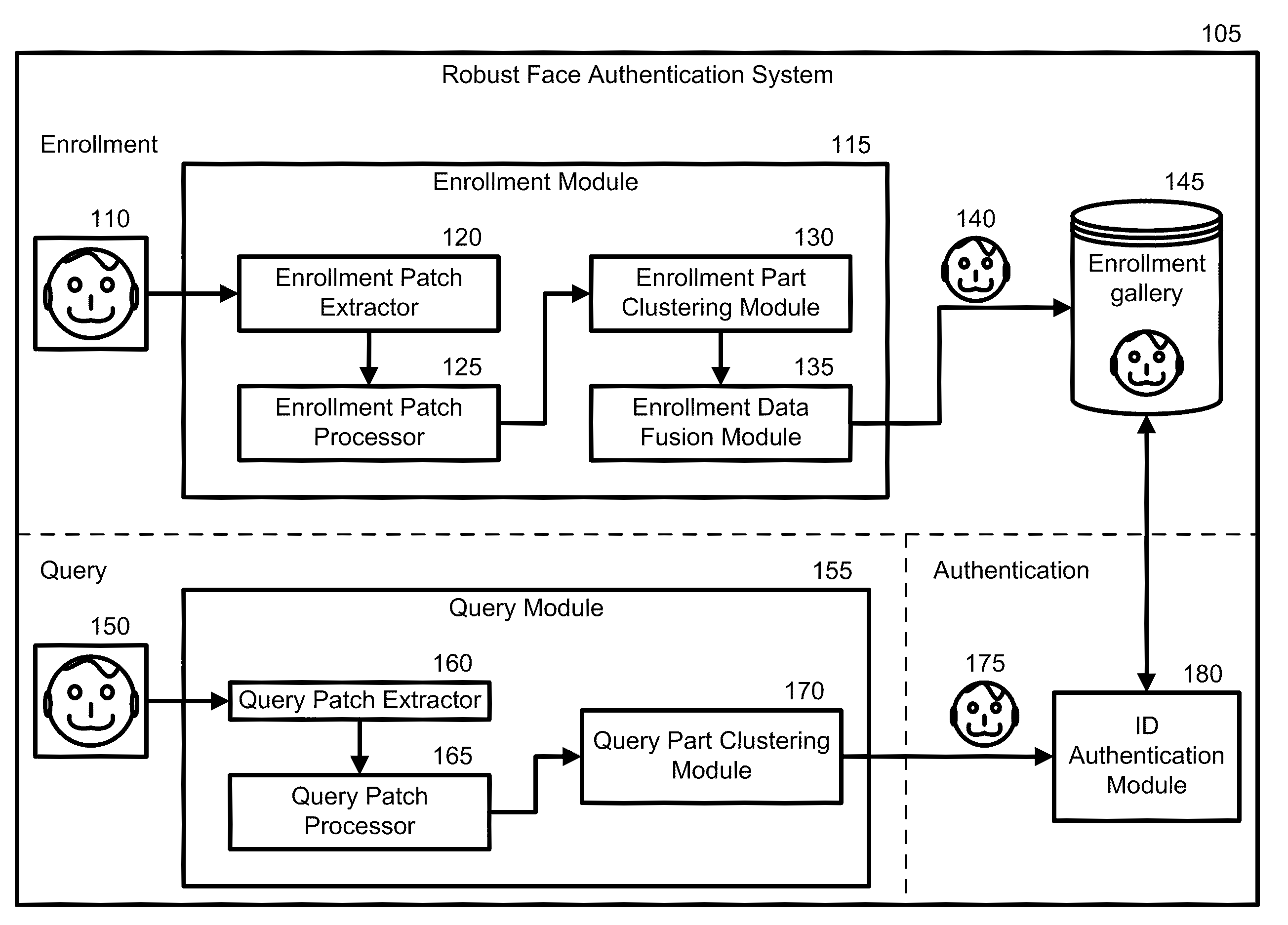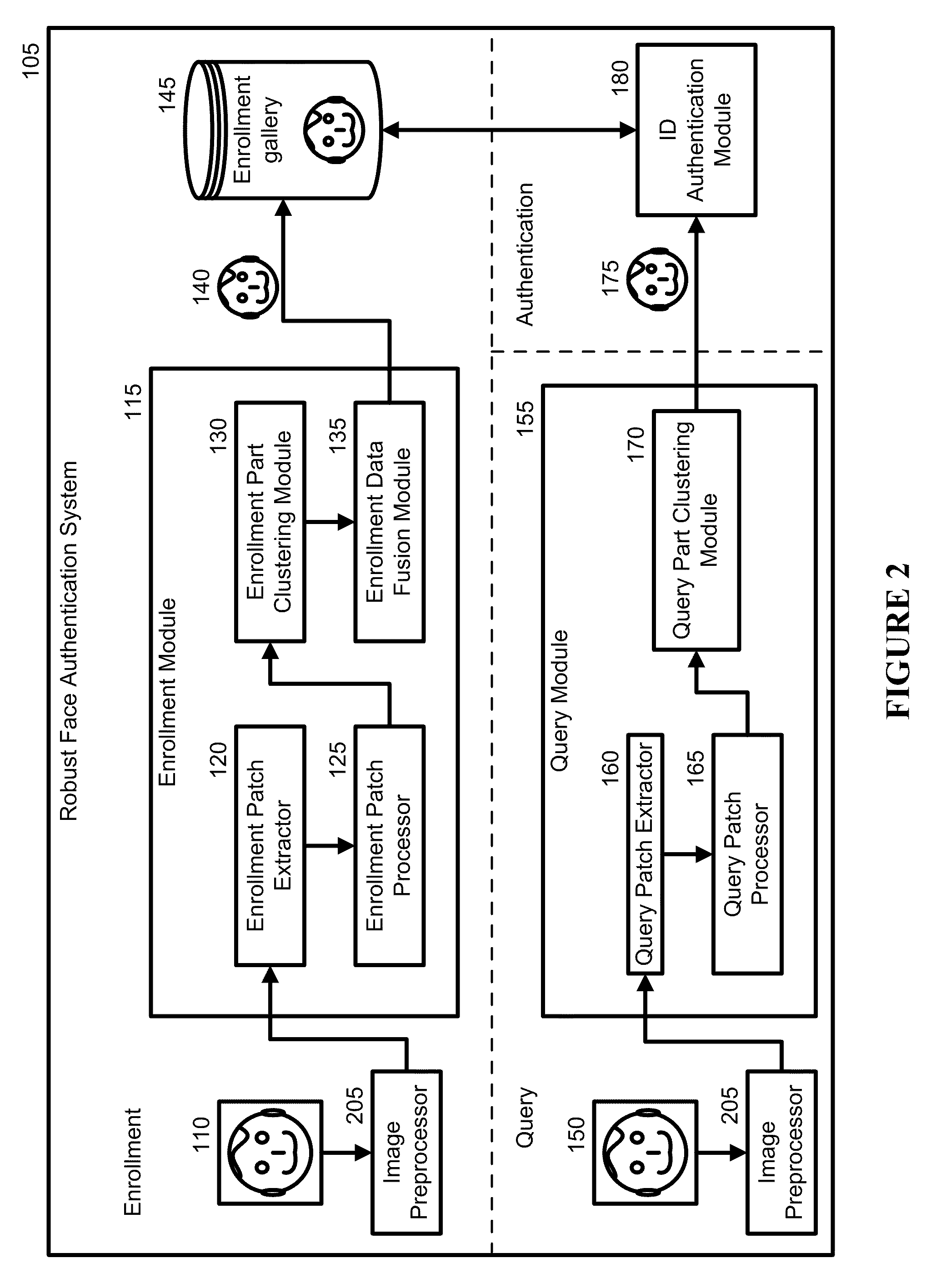Face authentication using recognition-by-parts, boosting, and transduction
a facial image and recognition technology, applied in the field of face recognition systems, can solve the problems of np, difficult implementation, and additional hurdles, and achieve the effect of robust authentication of facial images, boosting and transducing, and affecting the scope and performance of biometric analysis
- Summary
- Abstract
- Description
- Claims
- Application Information
AI Technical Summary
Benefits of technology
Problems solved by technology
Method used
Image
Examples
Embodiment Construction
[0029]Embodiments of the present invention address the problem of face authentication. Much of this disclosure discusses the embodiments with respect to face recognition and authentication. A new robust recognition-by-parts face authentication system, device, and method embedded in a physical and tangible computer readable medium are introduced that may be used to aid recognition.
[0030]As a robust recognition-by-parts face authentication system 105, it is a physical architecture with each component of the architecture being a physical module. An example of the system can be a machine that comprises a multitude of machines or modules with specific, individual responsibilities that can communicate with one another. The robust recognition-by-parts face authentication system 105 determines if at least one query image obtained using an imaging device (e.g., camera, video, recorder, etc.) matches at least one training image in an enrollment gallery. The enrollment gallery serves as a gall...
PUM
 Login to View More
Login to View More Abstract
Description
Claims
Application Information
 Login to View More
Login to View More - R&D
- Intellectual Property
- Life Sciences
- Materials
- Tech Scout
- Unparalleled Data Quality
- Higher Quality Content
- 60% Fewer Hallucinations
Browse by: Latest US Patents, China's latest patents, Technical Efficacy Thesaurus, Application Domain, Technology Topic, Popular Technical Reports.
© 2025 PatSnap. All rights reserved.Legal|Privacy policy|Modern Slavery Act Transparency Statement|Sitemap|About US| Contact US: help@patsnap.com



